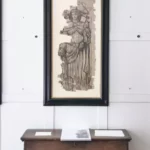The University of Oxford Botanic Garden is Great Britain’s oldest botanic garden and one of the oldest scientific gardens in the world. The Oxford Botanic Garden was founded in 1621 as a physic garden, and it grew plants for medicinal research. Today, the garden contains over 5,000 different plant species and is one of the most diverse yet compact collections of plants, including representatives from over 90% of the higher plant families.
What's the History of the Oxford Botanic Garden?
The garden was founded in 1621, when Henry Danvers, 1st Earl of Danby, contributed £5,000 to set up a physic garden for “the glorification of the works of God and for the furtherance of learning“.
Danvers chose a site on the banks of the River Cherwell, northeast of Christ Church Meadow, an area that belongs to Magdalen College. Four thousand cartloads of “mucke and dunge” were needed to raise the land above the flood-plain of the river.
The plants of the garden were first catalogued by Humphry Sibthorp, a British botanist and the younger son of John Sibthorpe, MP. His Catalogus Plantarum Horti Botanici Oxoniensis was continued by his younger son, John Sibthorp.
What's the Layout of the Oxford Botanic Garden?
The layout of the garden is organised into three sections: The walled garden, the glasshouses, and the lower garden (plus an area between the walled garden and the River Cherwell and a satellite site called the Harcourt Arboretum).

The Walled Garden is surrounded by the original seventeenth-century stonework. It houses the garden’s oldest tree, an English yew or Taxus baccata and the Geographic Beds, Medicinal Plants Beds, and the Literary Garden.
The seven Glasshouses cultivate plants that need protection from the English weather. The first greenhouse was built more than 300 years ago. Then, it was a temperate conservatory that resembled an orangery or grand stable. It housed exotic plants such as citruses. The seven glasshouses are: The Conservatory, Plants from Higher Places, The Cloud Forest, The Water Lily House, The Carnivorous Plant House, The Rainforest House, and The Arid House.
The Lower Garden has ornamental collections such as the Rock Garden, which has many mediterranean species. The Gin Border shows plants used in the production of gin, while other beds include the Plants That Changed the World, Merton Borders, and Herbaceous Border.
The Oxford Botanic Garden in Literature
The Oxford Botanic Garden received several visits from professor Charles Lutwidge Dodgson (Lewis Carroll) and the Liddell children, including Alice and her sisters. The Garden inspired some of the stories in Alice’s Adventures in Wonderland for example, the Waterlily House can be seen in the background of the illustration of “The Queen’s Croquet-Ground”).
Another Professor that enjoyed visiting the Garden was J. R. R. Tolkien, who liked to spend time under his favourite tree, an Austrian Pine or Pinus nigra. This tree might have inspired the talking, walking trees called Ents. Unfortunately, this particular pine had to be removed in 2014.
The garden was also mentioned in the Evelyn Waugh novel Brideshead Revisited, as Lord Sebastian Flyte takes Charles Ryder “to see the ivy” soon after they first meet. In Philip Pullman‘s trilogy His Dark Materials, a bench in the back of the garden is one of the locations/objects that stand parallel in two different worlds.
When is the Best Time to Visit Oxford Botanic Garden?
The garden is open all year round and is a definite Oxford-must in any season. Unless you are a pass holder, it’s recommended that you book a time slot to visit. The Garden is open from 10 am to 4 pm with the last entry being at 3 pm.
Website: https://www.obga.ox.ac.uk
Learn More About Oxford Gardens
-

Oxford Botanic Garden & Arboretum: A Brief History
£19.67 Get it from Amazon -
Sale!

Oxford College Gardens
£23.20Original price was: £23.20.£20.34Current price is: £20.34. Get it from Amazon -
Sale!

Oxford Aerial Map and Guide
£14.50Original price was: £14.50.£12.86Current price is: £12.86. Get it from Amazon -

Insight Guides Great Breaks Oxford
£11.29 Get it from Amazon
















